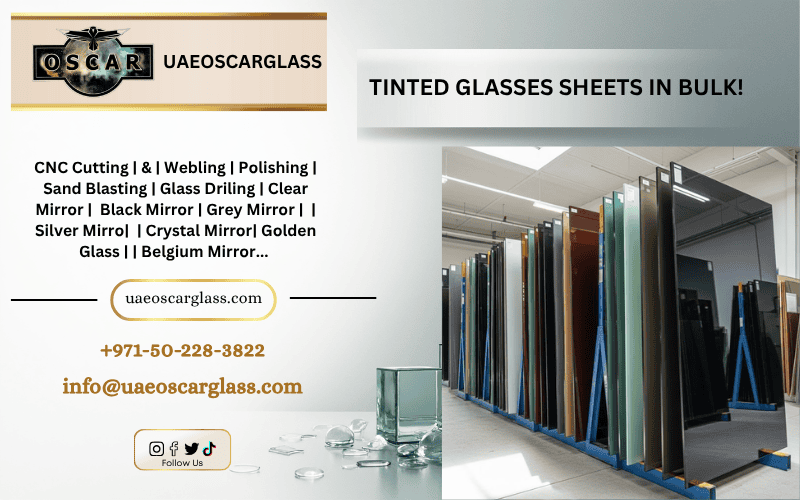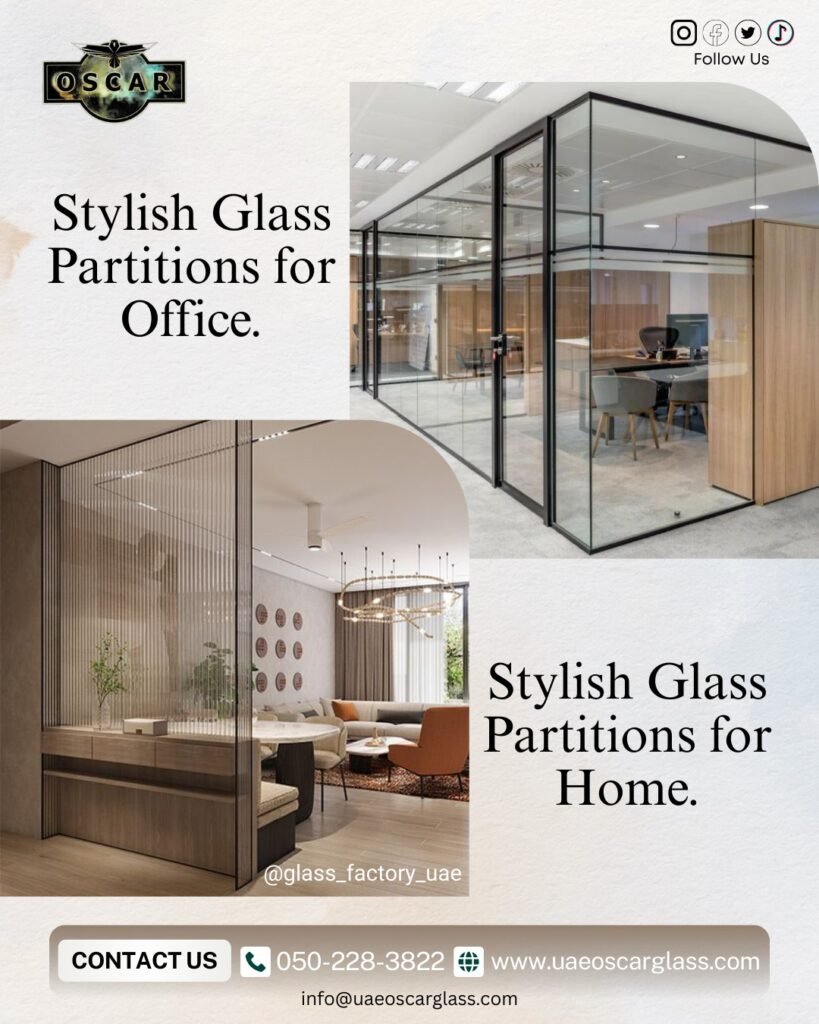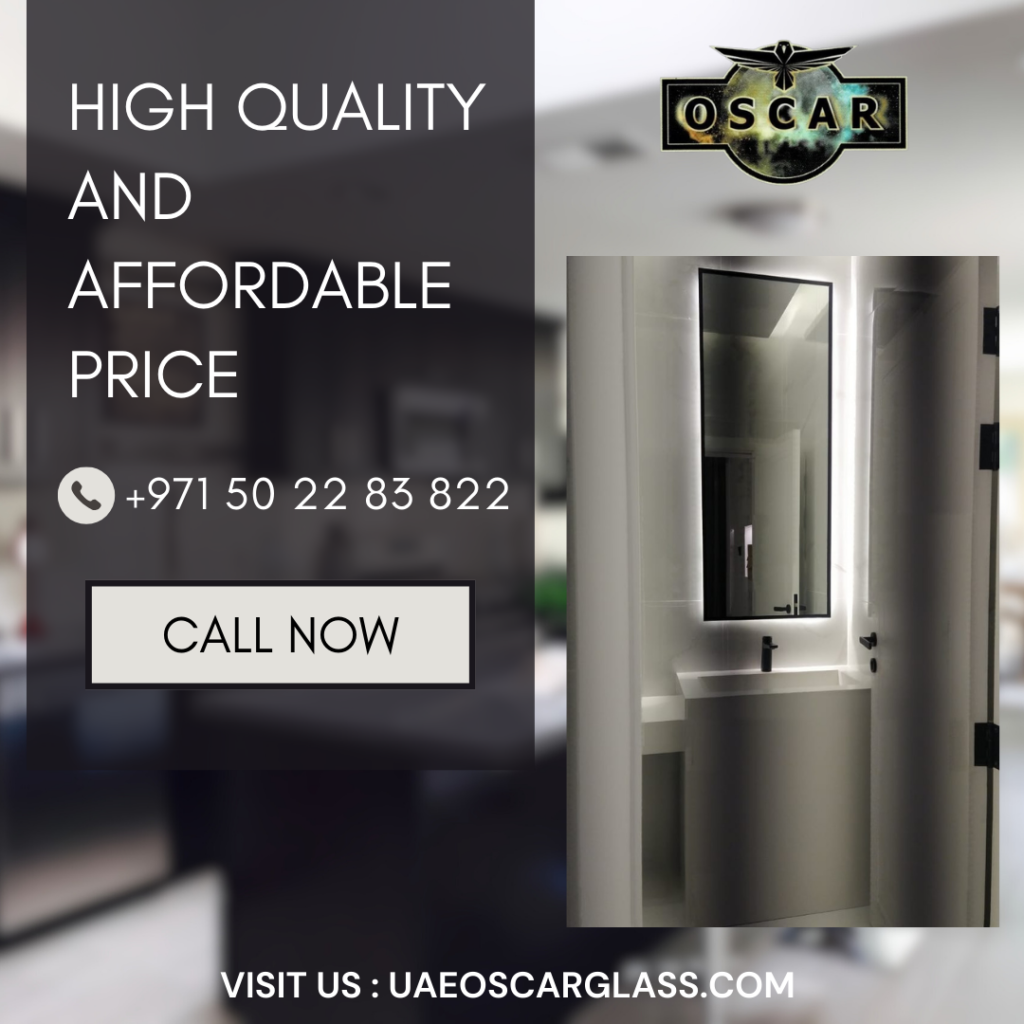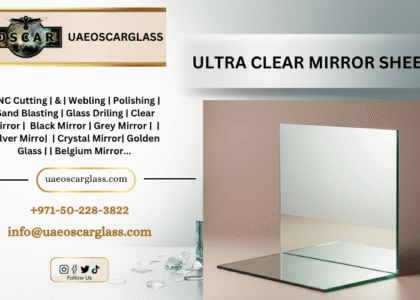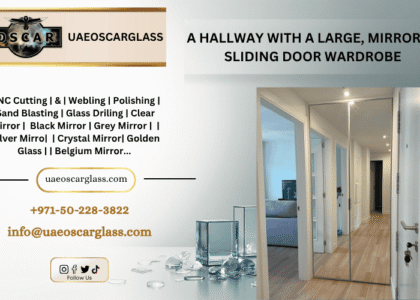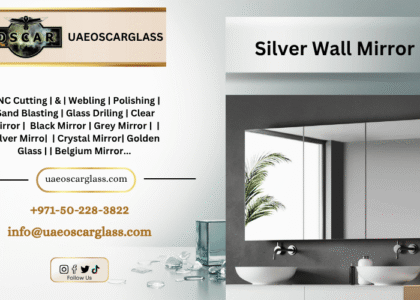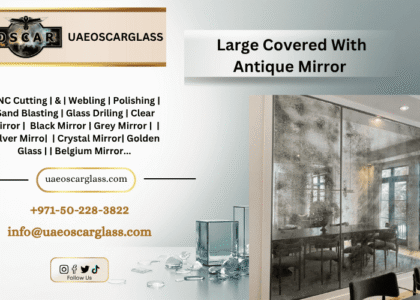Tinted glass is one of the most popular and versatile architectural materials used today. From modern homes to commercial skyscrapers, tinted glass offers an excellent balance of beauty, privacy, and energy efficiency. Its ability to reduce glare, minimize heat, and enhance aesthetics has made it a top choice for designers, builders, and homeowners worldwide. Whether used in windows, doors, facades, or partitions, tinted glass brings both style and function to any space.
What Is Tinted Glass?
Tinted glass is a type of glass that has been treated with metallic oxides or colorants during the manufacturing process to achieve various shades such as grey, bronze, blue, or green. These color additives are mixed into the glass while it is still in its molten state, giving it a uniform color throughout its thickness. Unlike surface coatings or films, the tint is an integral part of the glass, ensuring long-lasting color and performance.
Tinted glass works by reducing the amount of visible light and solar heat that passes through the glass. It helps create a cooler indoor environment, protects interiors from harmful ultraviolet (UV) rays, and provides a sleek and elegant appearance.
How Tinted Glass Is Made
The manufacturing process of tinted glass begins with float glass, which is produced by floating molten glass on a bed of molten tin. During this process, small amounts of metal oxides — such as iron, cobalt, or selenium — are added to achieve the desired tint.
- Iron oxides produce a green or grey tint.
- Cobalt oxides result in blue shades.
- Selenium compounds create bronze or neutral tones.
Once cooled, the tinted glass sheets are cut, polished, and often further processed into toughened, laminated, or insulated forms depending on the intended application.
Advantages of Tinted Glass
Tinted glass offers several functional and aesthetic benefits that make it a valuable addition to modern construction projects:
1. Heat Reduction
Tinted Glass One of the key advantages of tinted glass is its ability to reduce solar heat gain. By absorbing a portion of the sun’s energy, tinted glass minimizes heat transfer, helping maintain a comfortable indoor temperature. This can lead to lower air-conditioning costs, especially in regions with hot climates like the UAE.
2. Glare Control
Tinted glass helps reduce glare from sunlight, making it ideal for offices, homes, and retail spaces. It ensures better visibility and comfort for occupants, especially in areas with direct sunlight exposure.
3. UV Protection
Tinted glass blocks a significant percentage of ultraviolet (UV) rays that can damage furniture, flooring, and artwork. By reducing UV exposure, it helps extend the life of interior furnishings and materials.
4. Enhanced Privacy
Depending on the level of Tinted Glass and lighting conditions, tinted glass can provide a one-way mirror effect, allowing occupants to see outside while preventing outsiders from seeing in. This makes it perfect for residential windows, commercial buildings, and even vehicles.
5. Aesthetic Appeal
Tinted glass adds a sleek and modern touch to any structure. Available in a range of colors such as bronze, grey, blue, and green, it complements various architectural styles and enhances the overall design of buildings.
6. Energy Efficiency
By reducing heat gain and improving insulation, tinted glass contributes to energy efficiency. It helps reduce the load on air-conditioning systems, leading to lower energy consumption and operational costs.
7. Safety and Durability
Tinted glass can be further processed into tempered or laminated glass, increasing its strength and safety. In case of breakage, tempered tinted glass shatters into small blunt pieces, while laminated glass holds together due to its interlayer, ensuring maximum safety.
Types of Tinted Glass
Tinted glass comes in various types and shades to suit different design and functional requirements:
1. Bronze Tinted Glass
This warm and neutral shade adds elegance to any building façade. It is commonly used in hotels, shopping malls, and luxury homes. Bronze tinted glass also reduces glare effectively.
2. Grey Tinted Glass
Grey glass provides excellent solar control and privacy while maintaining a neutral color tone. It blends easily with contemporary architectural styles.
3. Blue Tinted Glass
Blue tinted glass gives buildings a modern and distinctive look. It offers good light transmission with balanced solar control, often used in corporate offices and towers.
4. Green Tinted Glass
Green tinted glass is energy-efficient and environmentally friendly. It provides excellent solar control and natural aesthetics, making it popular in eco-friendly projects.
Applications of Tinted Glass
Tinted glass is widely used across residential, commercial, and industrial sectors:
- Building Facades: Used in curtain walls and cladding for energy-efficient and modern architecture.
- Windows and Doors: Common in homes, offices, and commercial spaces to enhance privacy and control light.
- Skylights and Roof Glazing: Reduces heat and glare while allowing natural light.
- Glass Partitions: Provides stylish interior separation with a touch of color.
- Automotive Windows: Helps maintain a cooler cabin and provides privacy.
- Shops and Showrooms: Used for front glazing to reduce heat while keeping displays visible.
Tinted Glass in the UAE
Tinted Glass In the UAE’s warm climate, tinted glass plays an essential role in sustainable building design. Architects and developers prefer tinted glass for its ability to reduce solar heat gain while maintaining visual appeal. Many leading glass and aluminium companies in the UAE offer a wide range of tinted glass products suitable for high-rise towers, villas, and commercial complexes.
Tinted glass also complies with green building regulations in the UAE, as it supports energy efficiency and reduces the overall carbon footprint of buildings. Local suppliers provide high-quality tinted glass that meets international standards such as ASTM and EN.
Maintenance and Care
Tinted glass requires minimal maintenance. Regular cleaning with mild detergent and a soft cloth helps maintain its clarity and color. It’s important to avoid abrasive materials or harsh chemicals that may scratch or damage the surface. When properly maintained, tinted glass can last for decades without fading or discoloration.
Conclusion
Tinted glass is more than just an aesthetic addition — it’s a smart, energy-efficient, and durable solution for modern architecture. Its ability to block heat, control glare, protect interiors, and enhance privacy makes it an ideal choice for both residential and commercial projects. With various color options and finishes available, tinted glass offers endless possibilities for design creativity and sustainability.
Whether you are building a luxury villa, a corporate office, or a retail outlet, tinted glass ensures that your space remains comfortable, elegant, and energy-efficient all year round.

